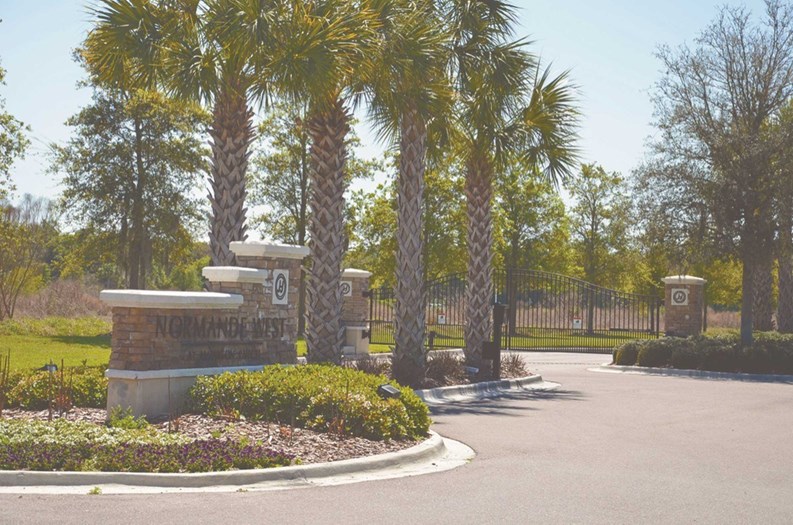Too often a condominium community takes a hard look at its security only after the damage is done.
“Our business is an event-driven business,” says Andres Vidales, district manager for ADT Security Services in the Miami/Fort Lauderdale area. “The majority of times that we get called, it is because something has already occurred.”
And when an incident does occur in their complex, residents tend to overreact. “When it does happen,” explains Officer Bob Wilkins, head of the Plantation, Florida police crime prevention unlit, “people have a perception that they are in the midst of an epidemic. But in reality they may have had the one or two isolated burglaries in their neighborhood.”
Whether theirs’ is an isolated case or a real indicator of a heightened level of crime in their neighborhood, the good news, says Wilkins, “is that it does invoke them to take a greater role in crime prevention. And it is a lot easier to handle your crime problem head-on then to wait until it happens.” And a lot less damaging to the psyche.
A top-grade, state-of-the-art security program can be more than an association can afford. But taken together, implementing a range of low-cost and no-cost solutions can take the community most of the way there.
Steps to Safety
The most effective approach to crime prevention doesn’t cost a dime, but does take extra effort. “The number one thing is community involvement,” advises Wilkins. “Crime feeds on apathy. If people simply mind their own business, their entire community is vulnerable to crime.” For starters, he adds, “residents should get to know their neighbors and share information.”
Once united in their desire to get proactive in fighting crime in their community, association members should bring in experts to advise them, like Wilkins, or Carmen Gonzalez Caldwell, executive director of Citizens’ Crimewatch of Miami-Dade County.
“One of the most important things managers and associations can do is to reach out to their police department,” says Caldwell. “Have them do a security survey—a free service that most police departments offer. Invite your local police department to come in to speak to your residents on what people can do to protect themselves.”
Associations in areas with high crime rates can go a step further, inviting their police department to help them start a neighborhood crime watch. “Implementing a neighborhood watch is not easy,” says Caldwell. “It takes dedication and sweat equity. But it's the best thing that can happen to a neighborhood.”
To help get the watch started, a coordinator with the local police department will come to the first meeting, which is usually at the apartment or home of the one of the volunteers. They’ll provide information regarding crime trends, explain services the police offers and help the group set up protocols for communicating within the community. Plus, adds Caldwell, “we provide Crime Watch signs, house stickers and T-shirts—paid for with your tax dollars.”
Crime Prevention Essentials
Experts say the first line of defense for homeowners is to call the police at the slightest sign of suspicious activity on the property.
Residents often think, a stranger acting “suspiciously” might be a neighbor they don’t recognize. And they believe the police will be upset if they are bothered with false alarms.
“No!” insists Caldwell. “Do not hesitate. When in doubt, call the cops. It’s better to be safe than sorry. And no, the police don’t mind you calling, even if it turns out to be nothing.” She recommends programming the local police number into resident’s cell phones. And if you see a crime in progress, call 911.
“Suspicious” activity includes a stranger loitering on the premises, a vehicle cruising the roads, someone peering into cars or windows, kids walking around during school hours, solicitors without appropriate identification or someone knocking on doors asking for directions or with a strange-seeming story.
Once on the phone with the police, advises Wilkins, the resident should be prepared to stay on the phone, whether they identify themselves or not, and have patience with the long list of questions the police might ask to help them determine the level of threat. They will want the caller to be specific. Not, explains Wikins, “there’s a guy sitting out by a car that kind of makes me uncomfortable,” but rather, “there is a guy by his car and it seems like he is watching for something,” or, “he keeps trying door handles.” And, of course, a detailed description of the suspect or their vehicle is invaluable.
Stay Alert
According to Wilkins, “Most residential crimes occur because the opportunity to commit them exists, created by the victim through carelessness and lack of attention to security.” Residents should contact the managing agent whenever they notice that any aspect of the security on the property has been compromised—if a light has burned out, a gate is out of commission or if they notice graffiti or vandalism.
Residents should stay alert at all times while walking in common areas or from their car to their apartment. “We are so overwhelmed with our own personal issues,” notes Caldwell, “so distracted that we don’t pay attention to our surroundings. We forget to do things like lock the door when we leave the house or lock the car when we get out or leave things visible in the car.”
According to Wilkins, homeowners should “park their car in a well-lighted area. When you return to your car, have your keys in your hand ready to open the door and look around the car to ensure no one is waiting for you.” Also, he advises, “when walking in public, don't wear a lot of visible expensive jewelry or display large amounts of cash.”
If your building has a buzzer system at the front entrance, be sure to never allow anyone who has not been buzzed in to enter along with you. Thieves might pretend to be friends of neighbors who are supposed to let them in but aren’t home, relying on peoples’ reluctance to create an uncomfortable social situation. If someone you don’t know attempts to come into the building with you, you might act as if you’ve forgotten something in the car and walk away.
Low Cost Solutions
There are two key elements of security that can be implemented at a cost that will not bother the board treasurer.
“Lighting is number one,” says Caldwell. Vidales advises, “Put up as many lights as you can. Criminals want to be undetected and darkness is a playground. Condominium associations need to light their parking lots better and put some motion sensing lights around the perimeter.”
Motion-activated floodlights can be installed in out-of-reach locations around the residences themselves to scare away burglars and alert homeowners to potential problems outside. They should be installed so that they are tamper-proof.
If there are already a sufficient number of light fixtures around the complex, “simply changing the bulbs to a more powerful wattage helps,” suggests Caldwell.
The second area to pay attention to is the landscaping. While they help beautify the grounds of the condominium complex, plants and trees can offer places to hide. Trees and bushes should be trimmed so they allow clear lines of sight throughout your property. Police recommend bushes and hedges be trimmed to two or three feet tall and the first seven feet of branches be pruned to prevent someone from climbing onto a second floor patio.
Caldwell recommends, “planting some bougainvilleas, which have very big thorns, on the inside of fences so anyone who tries to go over that fence will get hurt.” Barberries and roses also serve that purpose. Thorny bushes might also be planted beneath apartment windows. And using gravel stones that make crunching sounds near doors and windows curtail a criminal’s ability to stealthily prowl the premises.
Investing in Security Systems
Associations serious about security should invest in tightly-controlled barriers to all points of entry to common areas of the property. In addition to well-built, self-closing doors, at the very least, they should install locks with high-security keys that cannot be copied. And residents should be warned not to give out any copies they do have indiscriminately.
When Keith Fischer of Illinois-based Keyth Technologies went to evaluate the security at Lake Point Tower, a high-rise condominium in Chicago, he found that while the property had a restricted key system, “all the maids had keys to the building—and the pizza delivery guy, the dry-cleaning guy, the grocery delivery guy,” and so on. Residents had been reporting lost keys and then distributed new copies freely.
Keys for individual apartments that are held by management should be controlled by a computerized system that tracks their usage by building staff. Fischer recommends non-key and non-key-card (which can be copied) systems. “Biometric fingerprinting is advancing,” he observes. “The systems today are cost-effective, weatherproof, smaller and faster.”
Unmonitored cameras, costing about $200, are mostly valuable after the fact, for identifying intruders, but they do provide some level of deterrence when signs announce their presence. “Signage goes a long way at your major points of entry,” according to Albert Stewart, owner of the Tampa-based Integrated Security Consultants. “It lets them know that there is video or heightened security.”
To go the extra mile, associations can install high-tech, “remote concierge” systems at entryways. When a visitor rings at an entrance, their live image is sent to either an on-premises staff person or a remote monitoring station, or both. While such a system requires a large initial outlay, they’re cheaper in the long run than guards. And guards can be sources of collusion with criminals, too free in disclosing information about residents or lax in screening entrants.
Cameras are particularly effective when used in conjunction with a “video analytics” system and can be placed all around the property. “We can take video analytics and draw a circle in the pool,” says Stewart. “If the pool closes at 10:00 and there is someone there at midnight, it sends an email or text message to the manager,” who can pick up the video feed on a monitor or computer. Or the system can alert a live agent at a remote monitoring service, who will evaluate the threat and call the police if necessary. High definition cameras appropriate for use with video analytics run about $1,000.
Including the initial outlay for the cameras and computer system, and the monitoring service, says Stewart, “if you’re already paying $4,000 to $5,000 a month for 24-hour guard service, now you’re looking at paying $1,400-$1,500 a month for a security system that does pretty much the same thing.” A less expensive alternative is to have a motion sensor built into a regular camera, which sends a live feed to someone on-site who can call the police while viewing any intrusion into the property. “The police respond so much faster when there is video confirmation,” explains Stewart.
According to Wilkins, “Ninety percent of criminals are amateurs who are looking for easy opportunities.”
So the bottom line is that if you implement even a few preventive measures, strong lighting, locks and a basic alarm systems—plus enhanced vigilance on the part of association members—you can make your community a whole lot safer.
Steven Cutler is a freelance writer and a frequent contributor to The South Florida Cooperator.







Leave a Comment